Ruta National 40
Ruta National 40 is said to be loneliest road in Argentina. On a broader scale it would rival some of those in outback Australia or perhaps Alaska as the loneliest road in the world. Stretching the entire length of Argentina, itself the 8th largest country in the world, Ruta National 40 runs through endless tracks of desert scrub and loneliness, much of it gravel with very few turns and even less signs of life. It is a test of endurance, patience and drowsiness across empty beauty. Julie and I had about 1,500 kilometres (900 miles) ahead of us and couldn’t wait.
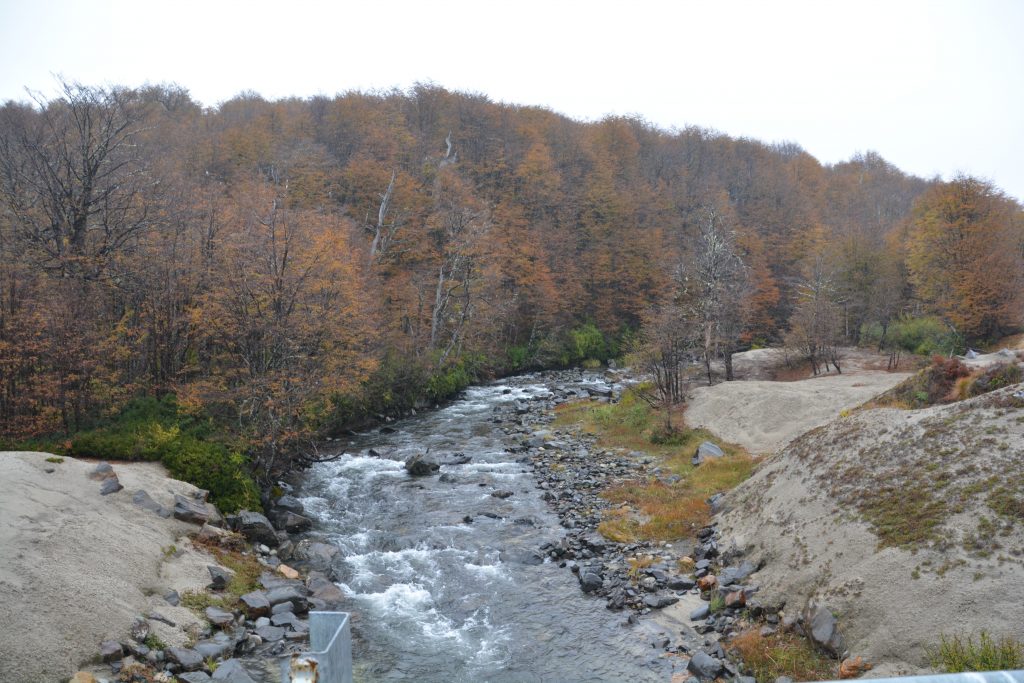
Fall colours had already started to appear in the mountains near the Argentinian resort town of Bariloche
We started our southern journey on Ruta National 40 from Bariloche, the popular tourist destination on the banks of Lago Nahuel Huapi with majestic snow-capped mountains all around and holiday in the air. Add to that the pine trees, beautiful summer homes and crisp mountain air and it was easy to understand why Argentinians flock to this playground.
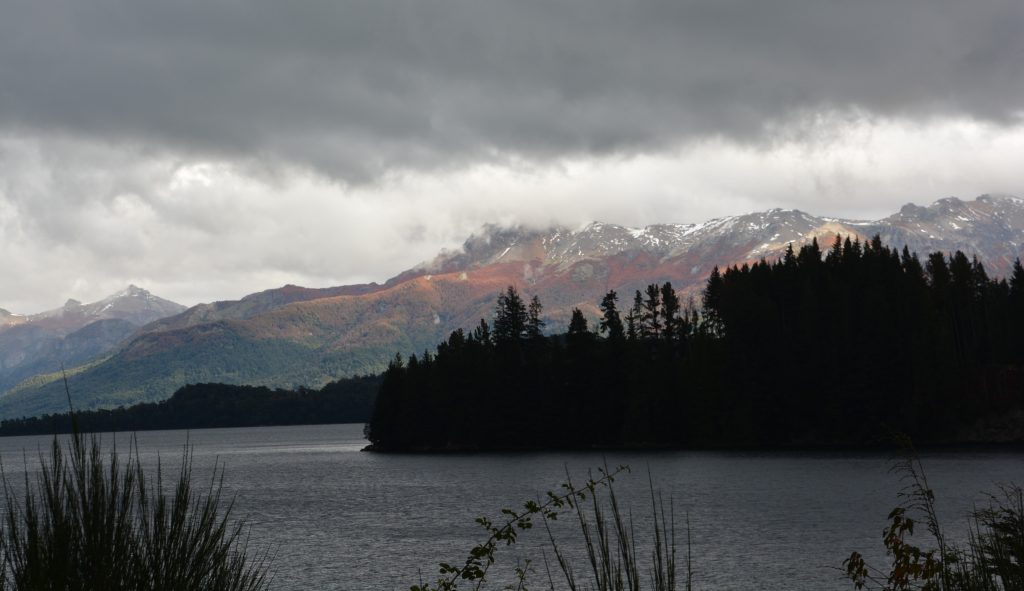
Our arrival in Bariloche was marked by low grey clouds and a fierce wind but it didn’t take too much imagination to see what a special area this is
We travelled up and over the mountains that cover the area, passing by the shores of numerous lakes and loving the yellow and orange fall colours of the Poplar trees that grew on their shores and up the mountain slopes. But eventually we put the mountains behind us and headed off across the desert plains as Ruta National 40 stretches its legs and settled in for a long drive.
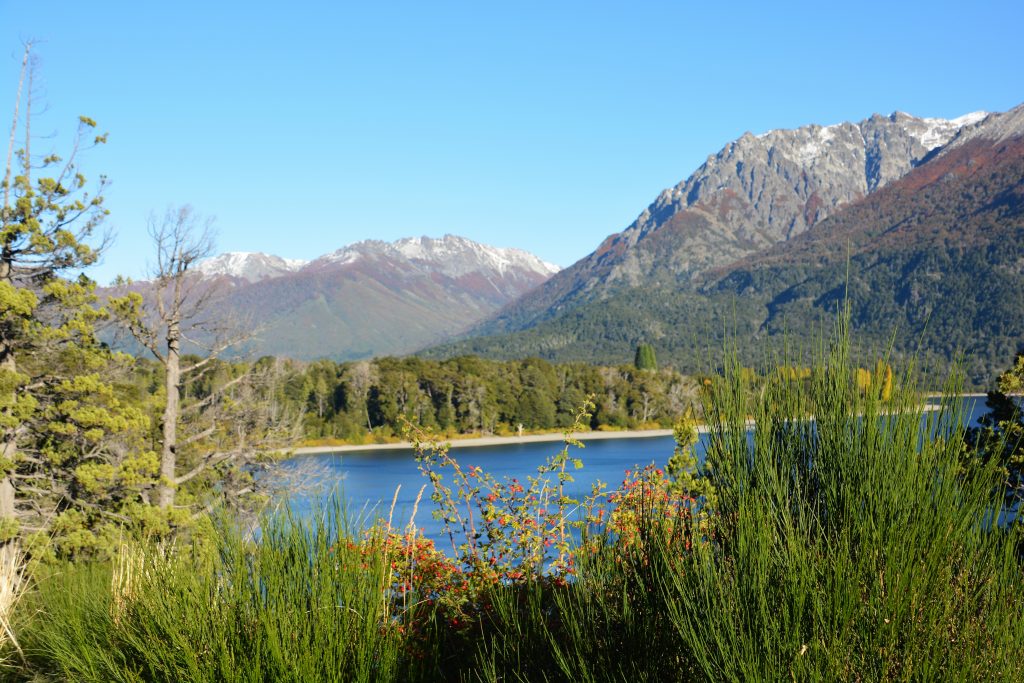
The clouds had blown away the next day as we left Bariloche and the splendor of these mountains and lakes really was on display for all to see
This famous road runs down the western edge of the southern region of Argentina known as Patagonia. Patagonia is actually the name given to all of the southern parts of the continent, including those of Chile, and it is more famous for its mountains and glaciers in its southern half. But to get to down there you have to earn it.
As we have come to learn, deserts take many forms but this one in northern Patagonia was fairly mainstream. Rocky and sandy, covered in scrubby grass and thorny little bushes, most of the land was completely useless but we did see an occasional herd of sheep or – if a stream ran through which created a little greenery – some scrawny cattle. Most of the estancias – or large ranches – that cover this area seem to keep their fences in good order but run very little livestock. And with good reason from what we could see of the alleged fodder.

There are vast distances between stops on Ruta National 40 but at this ‘must stop’ fuel station we had to wait until the fuel delivery truck had finished filling their tanks
But the desert was the star and the straight road was the mechanism to admire it. We pushed on and on, keen to get a good pile of miles behind us, but we did have the chance to see a few small groups of rheas, a flightless bird similar to the ostrich or emu but only half the size. We also saw the illusive and skittery guanaco, the fourth of the group of camelids that roam this continent. The guanaco is closer to the vicuna in appearance but slightly bigger and not as stout or woolly as the domesticated llama or alpaca.
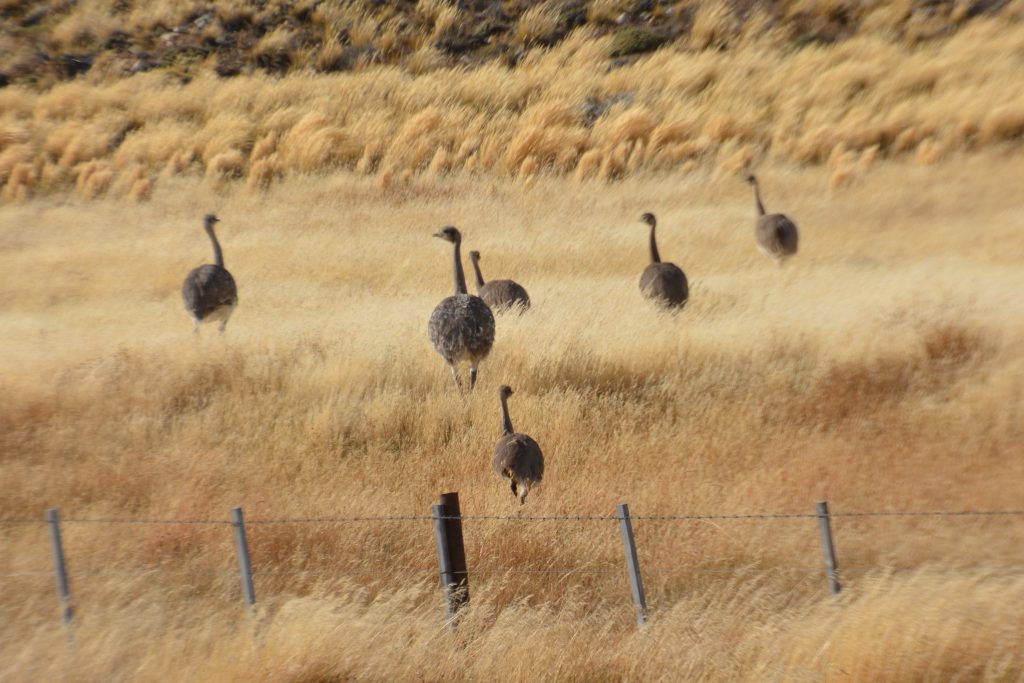
The rhea is sort of a pint-sized emu or ostrich but very shy – as soon as we would slow down to take a photo they took off
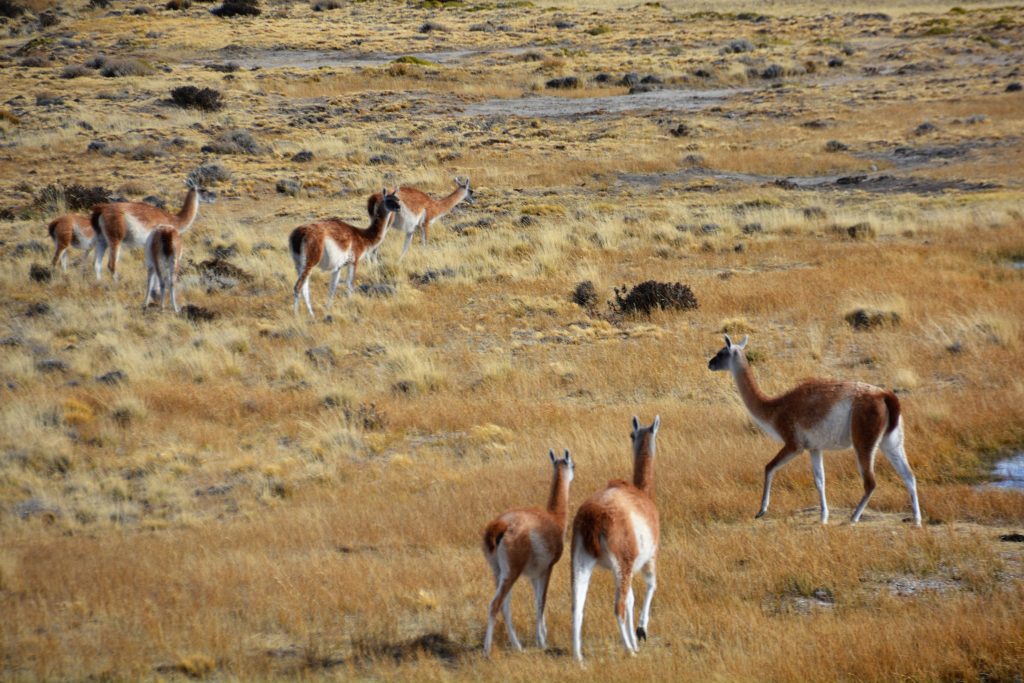
We also had our first sightings of the wild camelid called guanaco which are also extremely shy – we usually only saw their backside as they were racing away
After a long day of cruise control we finally aimed to camp behind an old abandoned petrol station in the middle of nowhere. A perfect spot except when we got out of the truck we disturbed a horde of angry bees who attacked us with deathly gusto. Comedic chaos ensued but we managed to eventually drive away from swarm although Julie was stung once and I was stung three times. We camped that night in the middle of the flat endless desert, freezing from the knock-you-over wind, licking our wounds and agog at the bright orange sunset that seemed to wrap around the ever-tranquil Tramp.
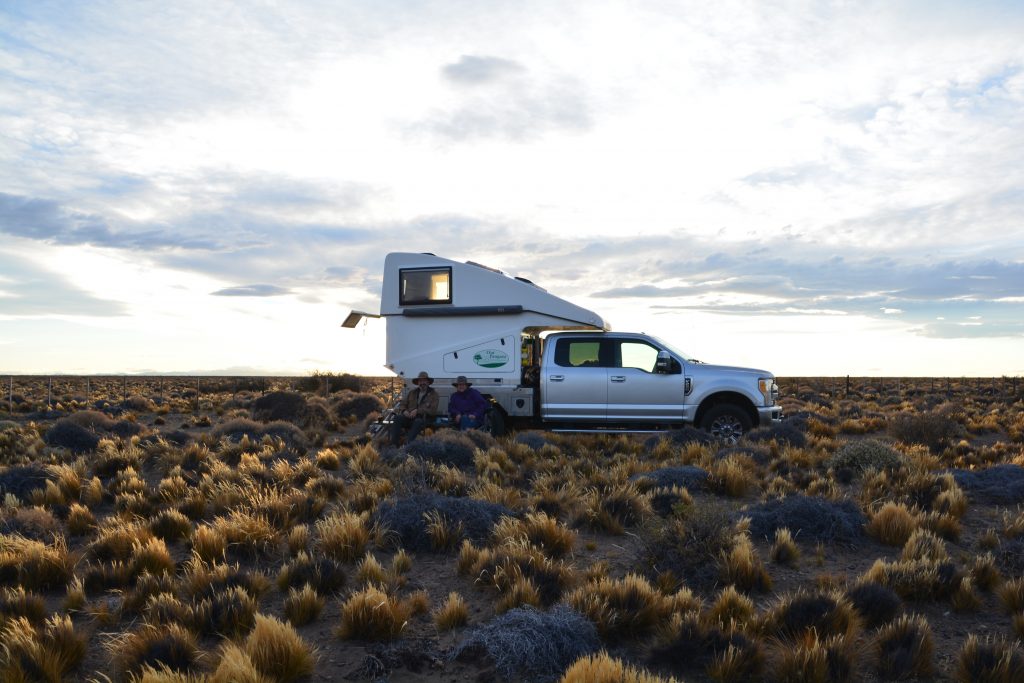
Camp in the wide open plains of the Patagonian step – on this night we were nursing some nasty wasp stings
But Ruta National 40 is a beast, a long sinuous beast which stretches across the flat lands, luring you into its ever-reaching grasp. We continued our southerly journey, mostly across good road, the momentary gravel, potholes to fear with your tire rim’s life. We stopped to fuel up at the remote town of Perito Merino, knowing that the next 630 kilometres, or 390 miles, would be without access to reliable fuel. That in itself tells the tale of Ruta National 40.
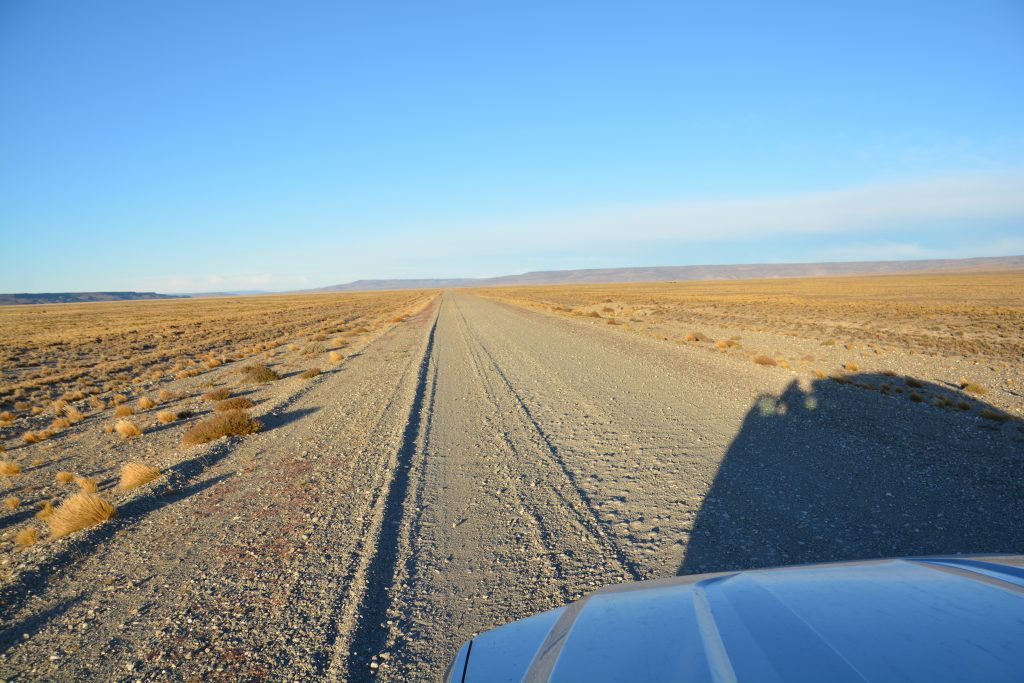
Most of Ruta National 40 is paved but some long sections are just gravel and gravel usually means washboards – bad for the vehicle and bad for our nerves
Sometimes the desert was fenced and showed the occasional small herd of sheep, more likely it was a few rheas or a large crowd of guanacos that made their presence. We completely fell for the guanacos – long neck and legs, small head, predictable pattern of brown and white fur, skittery to the point of being almost impossible to photograph, often racing off like a bullet and gracefully jumping any fence in its way. Guanacos are cool.
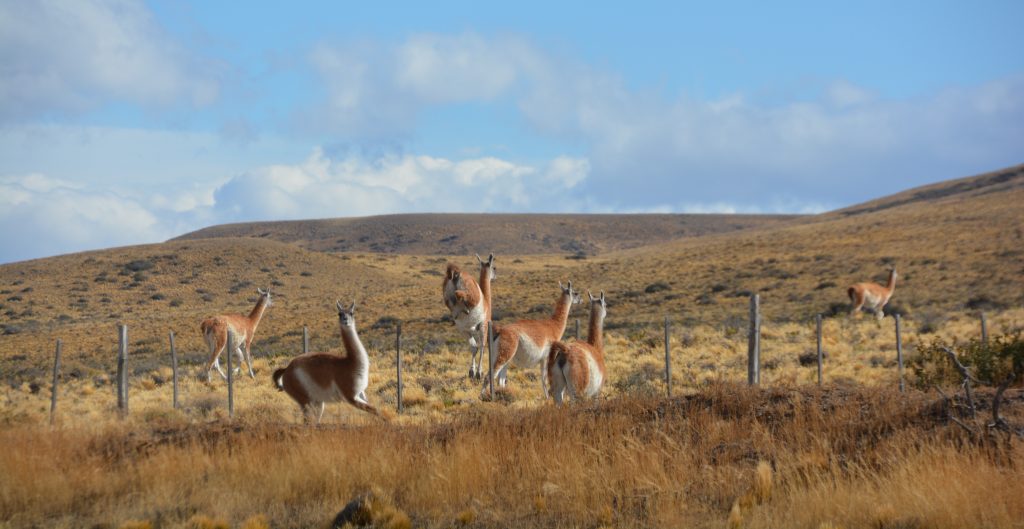
More guanacos racing away from us – as you can see, they gracefully jump over any fence, especially when the big Ford slows down to take photos
But the landscape seemed to say that we had taken a wrong turn and had ventured into the mysterious never never where no one else had been. We would go past the horizon before turning the wheel and a good half an hour without seeing another car. There were no towns or signs of human life to feast upon. Tramp was our only friend.
Eventually we camped on the banks of the Rio Chico, tucking in behind some windswept bushy trees, our only protection from the relentless wind, a small fire courtesy of Chilean wood to keep us warm as the temperature again dropped to single figures. A delightful English couple, Richard and Rachel, who were on a similar overland journey to ours, pulled into the same grove of trees and joined us around the fire for wine and stories. Our swollen bee stings had given us hell all day and we hoped for relief the following day.
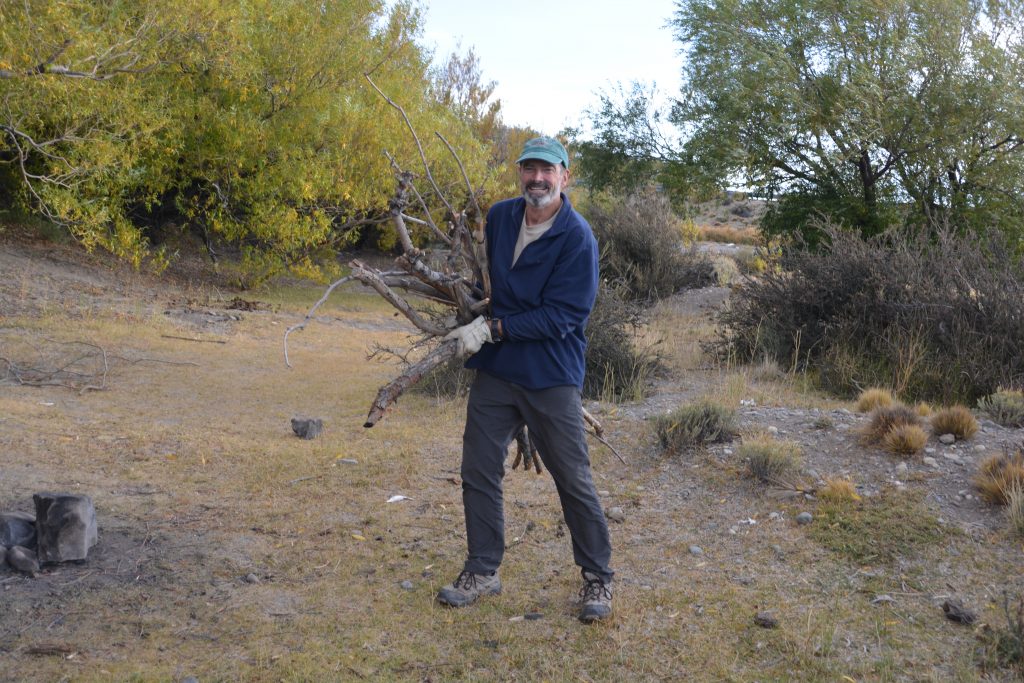
We’re having guests tonight around our fire so I’ve got to collect extra firewood from the few trees in this creekbed
In fact, we later learned that we had been stung by German Yellowjackets. Under the title DANGEROUS SPECIES this is what a local brochure says: “It is a wasp, a dangerous species introduced into Argentina. It can ‘sting’ more than once because it doesn’t lose its stinger. It can also bite using its strong mandibles. Its bite is highly dangerous, especially for allergic people. It is a scavenger and dangerous predator”.
The next day brought sparkling blue skies across the desert but alas, no relief from the persistent pain of the wasp stings. Ruta National 40 alternated between long stretches of loose gravel and slick payment but the scenery stayed the same.
We saw strong parallels between this desolate dry land with forlorn estancias (ranches) and the huge remote stations of outback Australia. Roughly the same type of terrain, same remoteness, same lack of water, same stock (sheep), same demands on those who choose to live here. Even the ever-present guanaco was the equivalent of Australia’s kangaroo, somehow thriving in these harsh conditions. Only the bitter howling wind and road signs in Spanish marked the difference.
Our target for the afternoon was Glacier National Park, famous for its jagged mountains, glacier-fed lakes and giant glaciers. The king of the crop was Perito Moreno Glacier and after dining out on glaciers in Alaska last year we were keen to see what the South Americans had to offer.
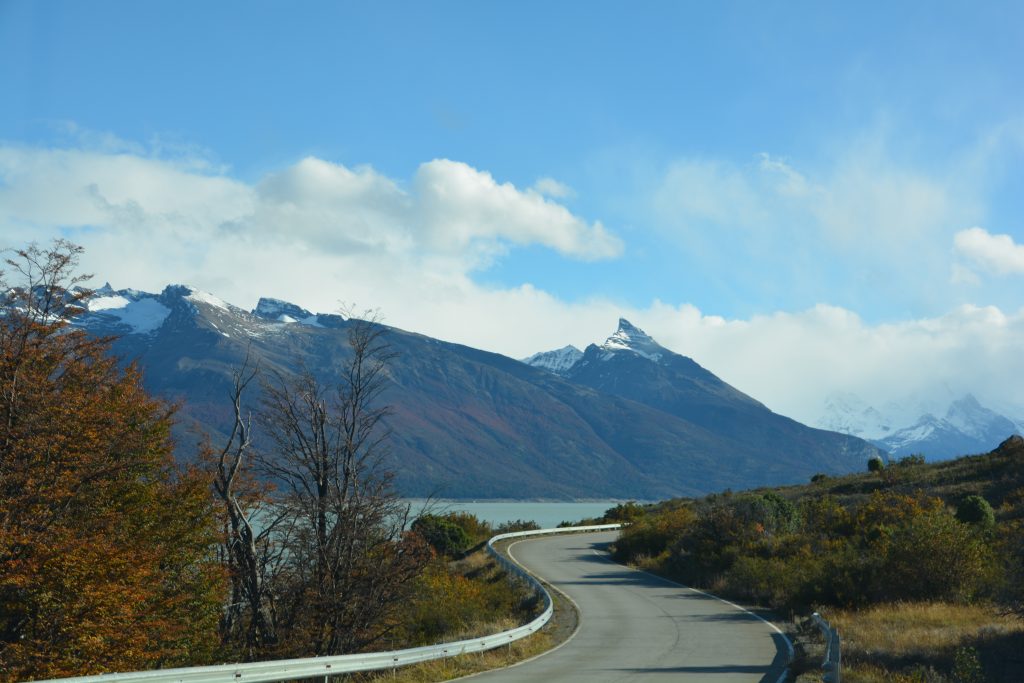
As we left the desert and entered the mountains the scenery changed and the road actually had bends in it

We had heard that condors could sometimes be seen in the park and this beautiful creature confirmed it by flying right across our first views of the glaciers
As the range of snow-capped mountains loomed into view and we hit the shores of Lago Argentino we knew we were in for a treat. The drive through the national park to the glacier was spectacular enough but what makes this glacier special, besides its enormous size, is that you can drive right up its face and via a network of catwalks get remarkably close to its 70 metre high front walls. Perito Moreno Glacier is 31 km (20 miles) long and the face runs for more than 4 km (2.5 miles). It is said the ice is up to 700 metres thick and that over the last couple of centuries it has remained fairly constant.
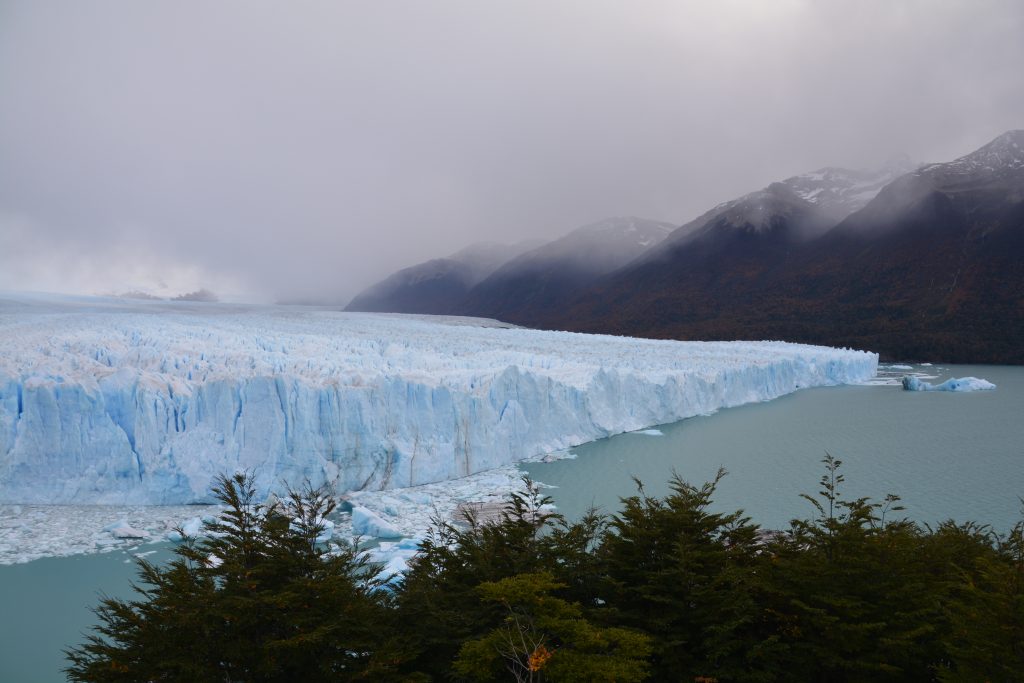
The Perito Moreno glacier in Glacier National Park – absolutely monstrous and very cool because we could virtually walk right up to it
The Perito Moreno glacier in Glacier National Park – absolutely monstrous and very cool because we could drive and then walk very close to it
We explored the catwalks and took in this amazing scene, watching as occasionally small chunks of ice would fall into the water, making an enormous echoing noise. It was bitterly cold and the wind was whipping up a frenzy, blowing more leaves off the orange and red trees around us. It was the start of winter, that was clear, but the glacier shined all the same.
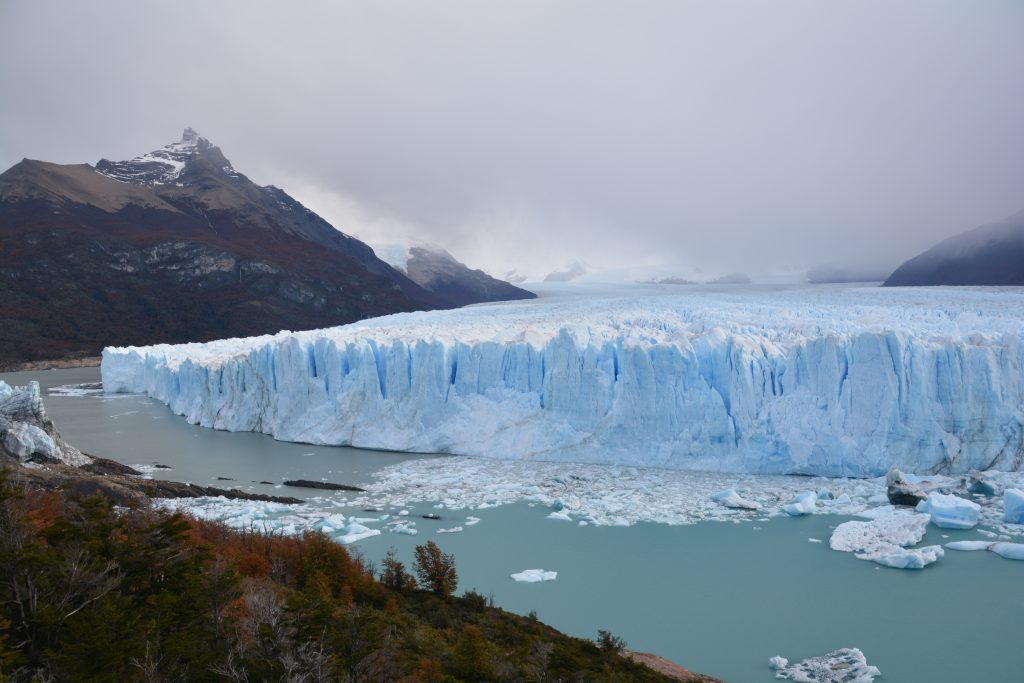
Another view of this massive icefield – we heard and saw small chunks of ice fall off into the water and make a disproportionate large echoing noise
I made a very amateur video of the glacier which you can see here: Perito Moreno Glacier.
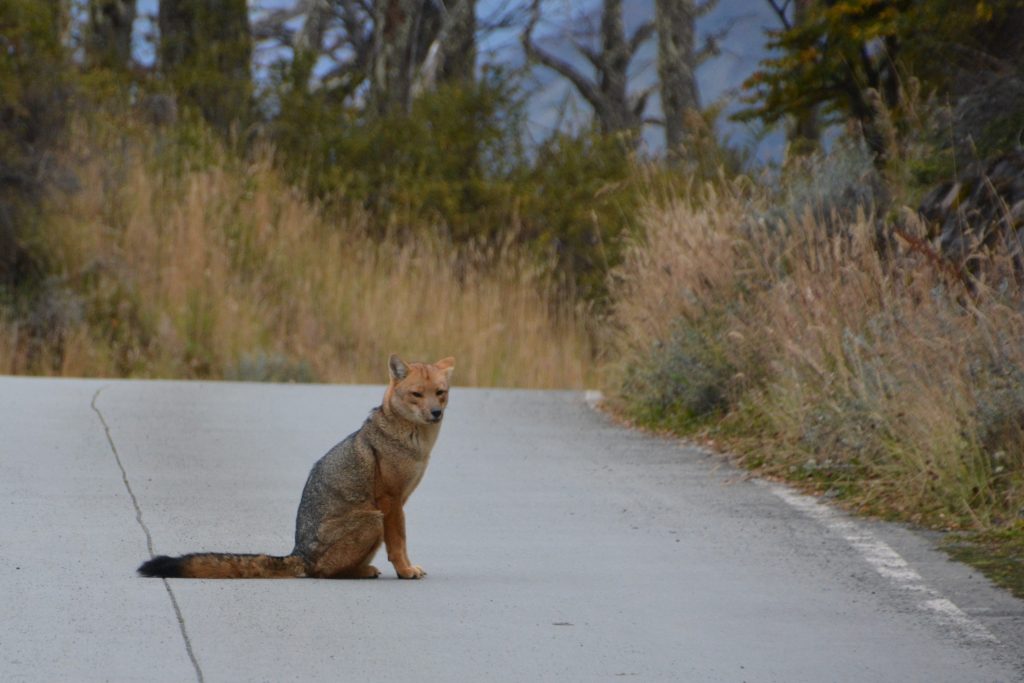
This beautiful red fox parked himself in the middle of our road and was in no hurry to get out of our way
We camped that night just outside the national park in a grove of trees, partly sheltered from the wind, watching the mountains above us slowly get blanketed in snow. The next day we would leave Ruta National 40 and jump back into Chile to check out more of what they have to offer in southern Patagonia.
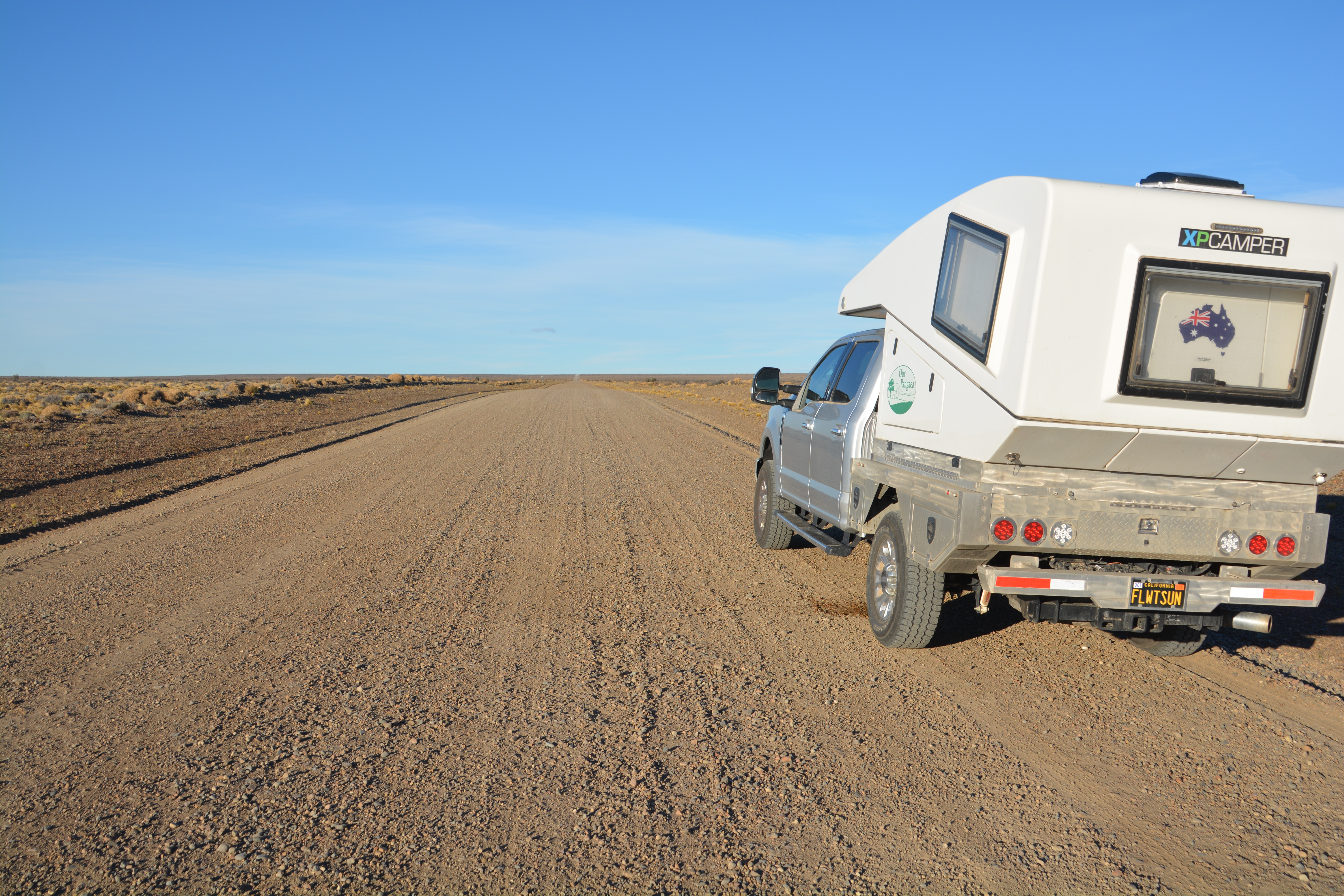










Comments
Ruta National 40 — No Comments
HTML tags allowed in your comment: <a href="" title=""> <abbr title=""> <acronym title=""> <b> <blockquote cite=""> <cite> <code> <del datetime=""> <em> <i> <q cite=""> <s> <strike> <strong>